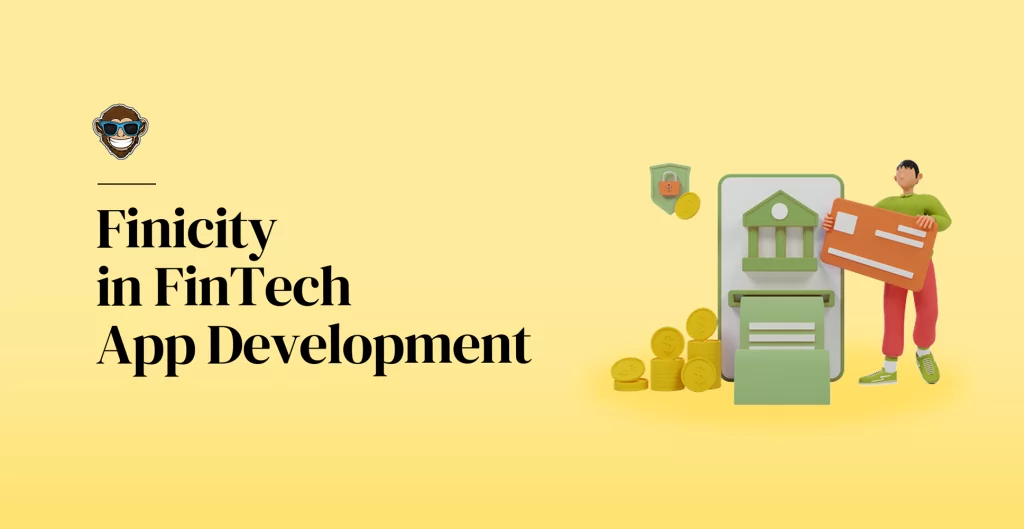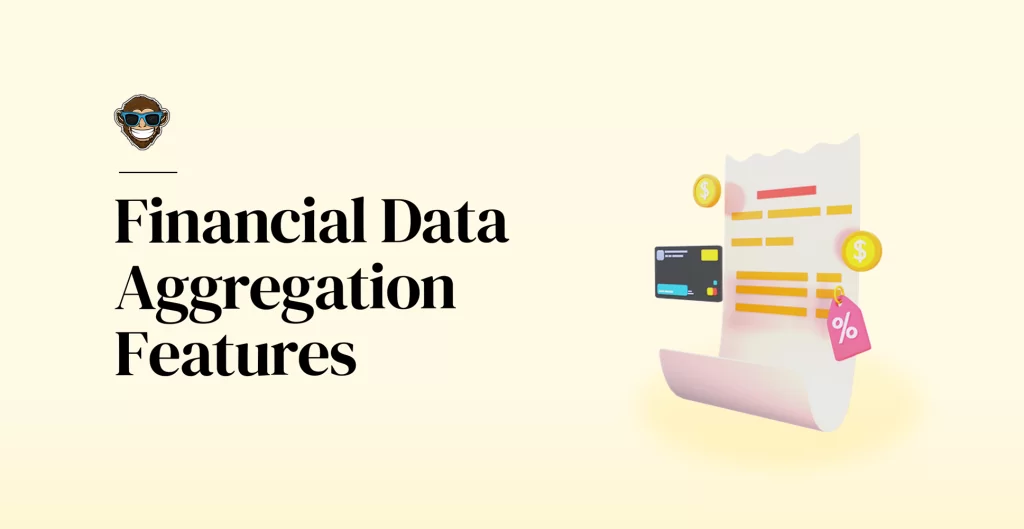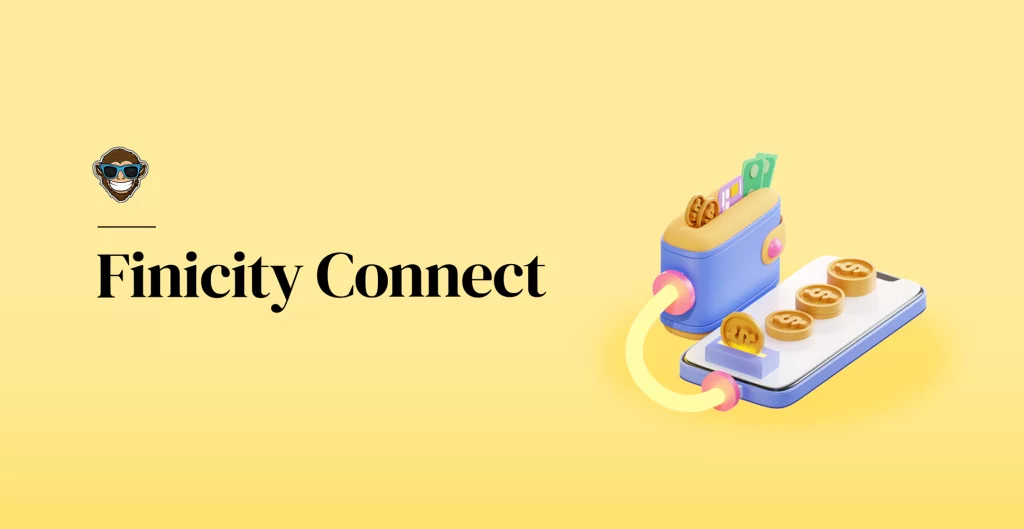Finicity is a groundbreaking company that helps people navigate the complicated world of finances and simplifies banking data management. Doing so empowers banking customers to make better decisions and have a healthier financial life.
Have you ever used an app to pay at the restaurant after having dinner with friends? Or have you gotten a bank loan approved from your cell phone without any paperwork, long lines, or waiting times? If you have, then you’ve been reaping the benefits of open banking and FinTech apps. That’s talking about now. In the beginning, or at least from a couple of years back, FinTech apps helped users transfer and receive money and pay for stuff using their online bank accounts. That was about it. Don’t get us wrong, as FinTech app developers, we love our FinTech apps, however simple or complex they can be. The thing is that now, these types of apps have coupled with open banking practices and financial data to give users the ability to do so much more with just the swipe of a finger. We can access and use our accounts, but we can now also control and share our banking data with FinTechs, banks, and lenders, creating a data exchange that promotes next-gen financial experiences. And, with the advent of these new financial services, innovative companies have been popping left and right to keep promoting modern banking experiences and extending better financial opportunities to more people. One of these companies is Finicity.
With the pandemic accelerating our dependency on modern technologies, mobile financial services became the norm for conducting online banking businesses. However, online financial transactions need fast and secure access to banking data in order to fulfill their potential and act as the life-changing solutions they are. Sadly, most digital economic systems are still disjointed and lack access to proper data-sharing ecosystems, which is why companies like Finicity are a godsend to our modern online banking-powered ways of living.
For today’s article, we wanted to take a closer look at Finicity and give you some insight into how the company is taking modern finances into your home. So let’s learn more about Finicity and its impact on current digital banking services.

What is Finicity?
Industries worldwide have had to shift their operations and immerse most of them in the digital world if they want to remain relevant in our increasingly internet-powered lives. Banking is no different. Companies of all kinds have started developing their own apps, which usually provide online ways of purchasing that allow users to access goods and services from their phones swiftly. There’s no denying that this instant access to products of all kinds is a godsend for consumers. However, when we buy something online, we need to safely share our financial data and link our bank accounts to the website or app we use to make our purchases. These connections can be problematic, especially considering that most banks run on outdated legacy systems that make it nearly impossible for modern apps to communicate with them efficiently. Thus, as the public demands faster and safer open banking connections, app developers and FinTech companies are in dire need of innovative ways of facilitating the bank-app relationship that kindles efficient online interactions. Sitting at the core of these interactions is Finicity.
Steve Smith and Nick Thomas founded the FinTech company Finicity in 2000 in Murray, Utah, their hometown, with the idea of helping users take charge of their finances via an online budgeting tool. This “initial” tool was called Mvelopes, and it was based on the good ol’ envelope budgeting principle where people separated specific amounts of money in separate envelopes. Each one was destined for food, clothing, credit card bills, etc. It sounded good on paper. However, to make the Mvelope’s idea come true, Smith and Thomas needed access to their users’ financial data so they could make the app work seamlessly. Eventually, they managed to properly secure said data and started connecting their tool to 1,200 financial institutions in the US. As time went on, they realized they were very good at promoting and facilitating these connections. By 2015, Finicity had already existed for 15 years and had facilitated connections with more than 10,000 banks, including behemoths such as Wells Fargo, Capital One Financial Corp, and JPMorgan Chase. The open banking facilitator was so successful that Mastercard purchased it in 2020 for $825 million.
But what exactly is Finicity? Simply put, Finicity is a financial data aggregation and banking-data insight platform. It allows users and businesses to give permission for their financial data to be used and packaged for other companies to provide their services. In that sense, customers are benefited from the right to determine how, when, and where third-party applications such as other FinTechs or banks access their financial information to conduct payments or manage their assets. These features and benefits have been so successful that Finicity’s APIs have now facilitated over 16,000 bank integrations. The vast majority of Finicity’s interactions are facilitated through connections that grant access to formatted financial data, improving access to banking information and its accuracy. Also, Finicity is the winner of API World’s 2016 Finance API of the Year.

How Does Finicity Work?
So by now, you already know that Finicity has something to do with open banking and financial data aggregation. But exactly how does it work? Simply put, Finicity provides solutions for payments, transactions, credit-based decision making, and overall financial management via its financial data aggregation platform. Those are very broad terms; listing Finicity’s benefits could take up a couple more paragraphs, and we’ll get into them soon. But let’s start slowly. So to illustrate, imagine a customer connecting their bank account to a payment portal, like PayPal. Finicity acts as the bridge between the user’s bank account, PayPal, and the external company that is offering the product or service the user wants to purchase. This process aims to protect the user’s financial data and simplify the data-sharing process for developers and stakeholders.
The process described above happens thanks to Finicity’s innovative APIs. They allow developers and stakeholders to safely access a user’s financial data, verify their account information, and improve the necessary financial insights to fulfill any type of online transaction that involves the intermediation of a third-party company or service. In addition, this process eliminates the need for bank credential sharing because the APIs use token-based authorization access, which the user provides on the bank’s secure website and not on a third-party’s page or app’s domain. Similarly, Finicity built their APIs with the purpose of enhancing personal finance management experiences, which include countless monetary management features, which include:
- Finicity Lend: “Borrowers want a better experience. Lenders want the most accurate and real-time data for better credit decisioning. So we’ve combined the best data with smart insights to transform the lending experience.” So says Finicity on their website. In other words, Finicity Lend is an open banking platform that simplifies money lending by engaging borrowers in the lending process while giving lenders access to all data so they can make a faster, more informed, and less risky decision. As a result, fraud chances are eliminated, and the verification process is more efficient and secure.
- Finicity Manage: With Manage, Finicity puts aggregated financial data at the hands of interested parties in a secure, organized, and categorized way so that financial decisions are easier to make.
- Finicity Pay: In a payments and transactions context, Finicity’s Pay APIs help stakeholders conduct bank account detail verification in milliseconds to enable secure, accurate, and risk-free online payments and transactions. Finicity has a real-time account verification process that reduces glitches and failures to ensure a seamless user experience and promote onboarding and compliance.
Among those three primary services Finicity provides, they also enable users to contribute data to their credit scores via Experian Boost and UltraFICO Score. These services help users manage their credit, achieve their financial goals, and create a banking ecosystem that is understandable and inclusive. Additionally, they have new services for mortgage companies and brokers, such as Guaranteed Rate and Loan Depot. Thanks to Finicity’s APIs, mortgage applications and management conducted on these websites help users apply for mortgages without paperwork and allow interested pirates to access the user’s financial history to make the verification and acceptance process as seamless and fast as can be.
Finicity’s overall mission seems to revolve around connecting and empowering users to their financial histories and helping create an inclusive, digital environment where the user and the businesses they interact with are on the same level data-wise. This phenomenon creates a safe haven that benefits everyone by making monetary transactions fast, secure, simple, and, more importantly, accessible to everyone.

Finicity in FinTech App Development
We could discuss Finicity’s features and benefits forever, and this article would get 20 pages long. However, our primary purpose as FinTech app developers is to point out how Finicity can integrate with FinTech apps to promote better, more efficient, and inclusive financial services for users of all backgrounds. So, let’s get to it.
Even though Finicity’s purpose–and probably their end-users–end up being typical, everyday FinTech app and online service consumers, FinTech app developers are their direct clients. Ordinary users take advantage of Finicity’s services when using their favorite payments, banking, or other transactional apps. In fact, most of them reap Finicity’s benefits without even realizing it because Finicity mainly works behind the scenes. However, FinTech app developers are the ones who implement Finicity’s features and functions into the apps that you and I use every day, so we can say that app developers are Finicity’s primary audience. For this reason, we’ll focus more on how app developers can use Finicity to bolster their FinTechs app’s features and benefits.
For starters, Finicity’s “belles of the ball” are their APIs that allow app developers to safely enable the transactions that give their FinTech apps their edge and make their users happy. Of course, if you’re an experienced developer, then you already know this. Still, it’s important to note that, in FinTech, APIs are crucial mediators between different applications, allowing them to connect and exchange data in a secure, compliant manner. In that same token, Finicity’s APIs represent a unique chance for developers to give more security to their users when sharing their financial data with third-party apps, banks, and other financial service providers that connect using the app. As a result, app users can interact with countless financial tools and services without worrying about personal data input, credential sharing, or any of the safety concerns this implies. As long as the app they’re using is powered by one of Finicity’s APIs, their financial information is safe, and the data shared and collected is confidential. In turn, their transactions are carried out in a smooth, seamless way.
Finicity’s APIs are also known for making developers’ jobs less complicated. They deliver a layer of abstraction that allows developers to rise above the need to program each financial interaction or have to adapt their app’s programming to each institution’s and third-party’s APIs and environments. The latter is nearly impossible, considering there are thousands of different banks with thousands of different systems and languages, and programming for each one would be insane! With Finicity, however, developers have a single endpoint for every bank or institution, which enables seamless integrations. These integrations not only result in seamless transactions, as stated above, but they also lead to more secure and automated financial data collection, which is one of Finicity’s star services.
Known for their security, Finicity’s APIs, which developers can implement in these direct relationships with third-party apps and banks, leverage Open Authorization (OAuth) technology to ensure the safety and confidentiality of the user’s financial information. oAuth technology helps connect different providers and their servers and services to safely allow access to authenticated users without them having to share their banking credentials with said third-party apps, banks, and other services. Instead, this information is replaced with tokenized access credentials that provide direct authorization and hide the user’s basic information from the recipient app. This way, Finicity has helped FinTech developers implement innovative tools to help them establish durable and secure financial relationships between their users and a wide variety of financial service providers. As a result, they can now set the groundwork for better, faster, and safer financial and payment initiation processes.

Financial Data Aggregation Features
Additionally, Finicity boasts a wide range of transactional APIs. They also provide financial data aggregation services for several personal financial management tools and companies such as Experian, Otto, and Rocket Mortgage. This financial data aggregation service is exceptionally innovative and groundbreaking because it facilitates access to financial data from several sources to leverage data-powered financial decisions. In other words, Finicity’s data aggregation service lists all of the user’s financial information and gathers it in one place. This data can range from information from only one bank to data collected from multiple financial institutions where the user has or had products. For instance, using Experian, customers can see their assets, income, debt, financial products, and other relevant information in a matter of minutes. Furthermore, they, or any other interested and authorized party, can access this information to leverage decision-making processes in a matter of minutes rather than days. As a result, implementing Finicity’s data aggregation services into FinTech apps can help drive faster verification processes for lending services and mortgage processes which would otherwise be slow and riddled with paperwork.
Moreover, Finicity’s financial data aggregation service is helping developers provide stakeholders with the necessary tools to digitize the asset verification process that comes with mortgages and lending. Compared to manual or traditional verification methods, digital asset verification can save stakeholders up to 6 days in the entire data gathering process. Most of the time savings come from eliminating pain points regarding the manual chase down of documents, communicating with borrowers, and even trying to make sense of the sea of paperwork and annotations strewn across different manuscripts from different sources. As a result, Finicity and FinTech app development can help financial and transactional companies and institutions drastically speed-up workflows and improve lending and mortgage processes.
Lastly, regarding data aggregation to fuel asset verification processes, Finicity recently launched its Digital Verification of Income and Employment solution (VOIE). This solution helps developers and stakeholders reduce the friction their users may experience when manually verifying income and employment in credit decisions. Finicity’s VOIE solution digitally extracts the user’s pay statement information and cross-verifies it with their income, assets, and other transactional data directly extracted from their bank. The VOIE solution is available for developers immediately. If you want to try it out, you can request a demo from Finicity and learn how to integrate the VOIE solution into your digital platform or FinTech app.

Finicity Connect
Finicity Connect is the foundation of Finicity’s essence. The application allows developers to implement Finicity’s data-sharing features and benefits and allows FinTech app users to authorize the use of their credentials to access their financial data.
Finicity Connect downloads all the information from the user’s account and uses it to build data and analytics documents for developers. Furthermore, the sorcerer’s stone allows developers to implement the features that let users access their account information, conduct online payments, apply for loans and mortgages, petition their financial reports, and much more.
Additionally, Finicity gives developers the following Connect development tools and capabilities:
- Free access to all their API endpoints.
- TSP protocol or OAuth service support to secure user credentials.
- Finicity Connect integrates with all web or mobile applications using an iFrame window.
- SDK resources for all web and mobile applications.
- Webhook events that indicate the user’s progress as they navigate Connect.
- Webhook events that guide both Google and Adobe Analytics.
Additionally, developers can use Finicity Manage to implement features such as accessing account statements, historical transactional data, loan payment details, and pending transactions. Developers can also access APIs that allow them to implement lend-report generation into their FinTech apps. Depending on their needs and the capabilities of their apps, these APIs enable developers to generate or fetch led reports. Lastly, developers can test Finicity’s APIs and access a broad range of documentation papers to help make the implementation process smooth and seamless.
So, if you’re a FinTech app developer and are considering whether or not you should implement Finicity’s APIs and features into your app, make sure to do your research first. Doing so can help you determine if Fincity matches your app’s characteristics and, more importantly, if it will satisfy your user’s needs. Hopefully, we’ve managed to help make your decision easier with this article.

In 2019, the number of people who accessed FinTech apps grew 71% compared to previous years. Thanks to the pandemic, that number increased 35%, reaching peak week in March 2020. What these numbers tell us is that FInTech apps are lifesavers in times when users cannot physically access financial services. And, even when we can access in-person banking services, most users are already choosing digital services over physical ones. As a result, FinTech app developers must promote financial inclusion and empower users to take charge of their financial lives. This is the premise behind Finicity.
The open banking platform has introduced innovative and groundbreaking solutions that are leveling the financial playfield and are creating an inclusive financial environment where all stakeholders have access to the same information at the same time. As a result, financial decisions are easier to make, banking processes are faster, and online transactions are seamless and, more importantly, more secure. Thus, Fincity represents a unique opportunity for developers to leverage countless benefits and power their FinTech apps with pertinent to financial inclusion that will, without a doubt, help their users feel empowered and included in their own financial decisions.
If you have any questions or concerns about Finicity, FinTech app development, or any other subject, we’re happy to help. So don’t think twice about contacting us!
